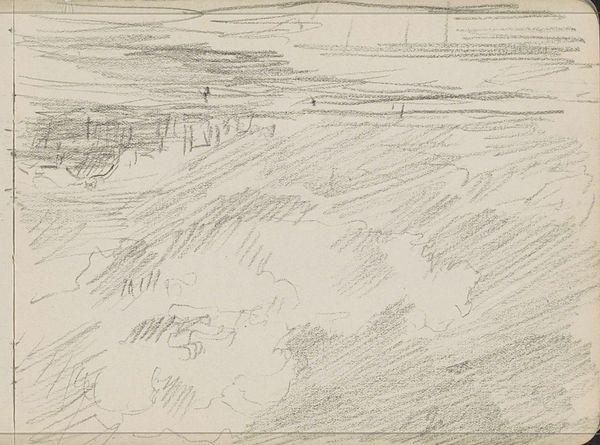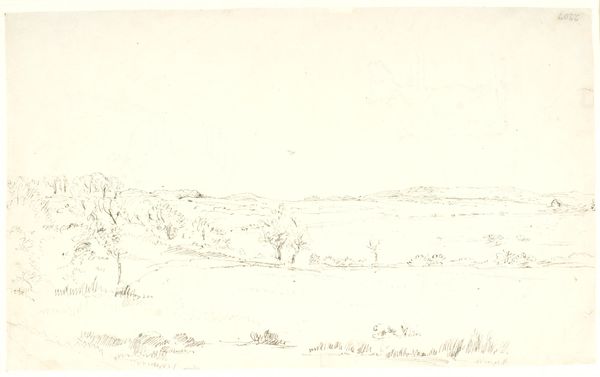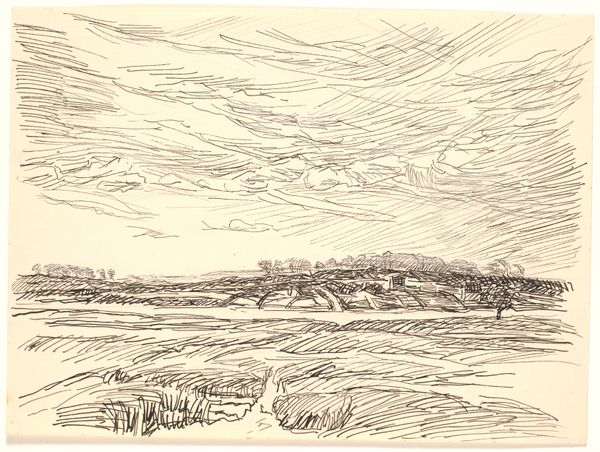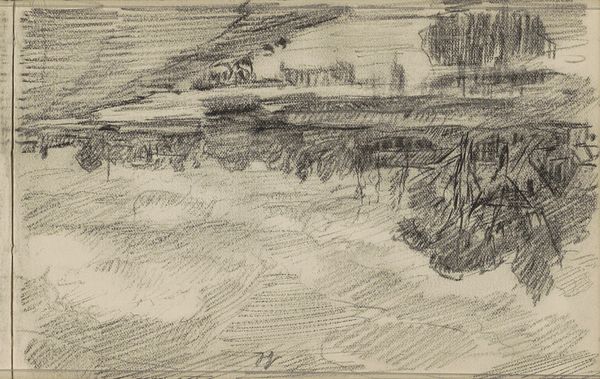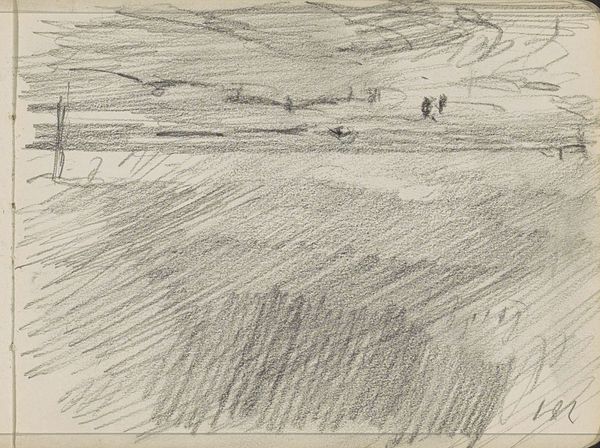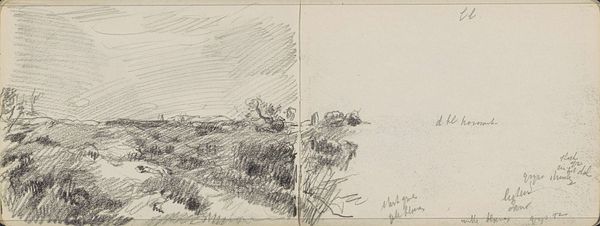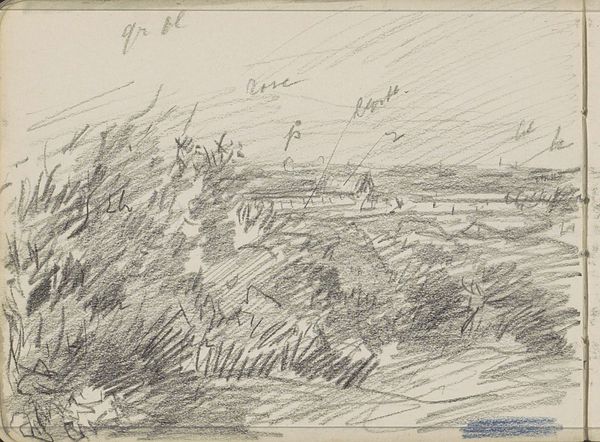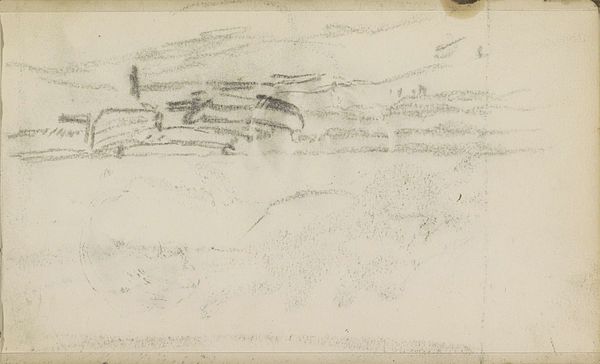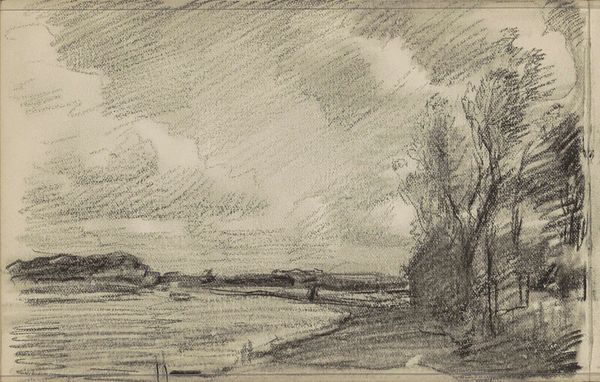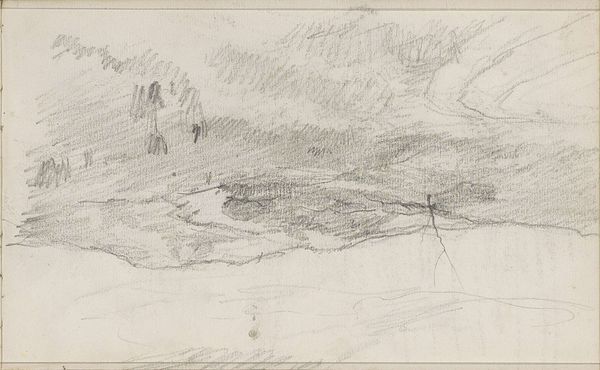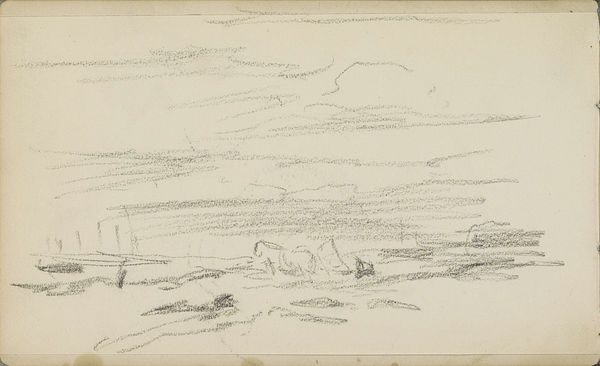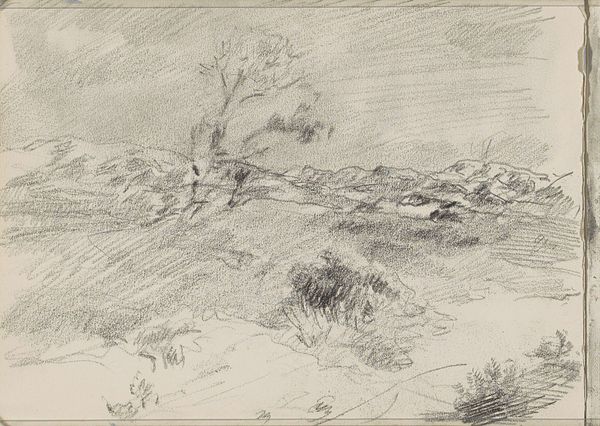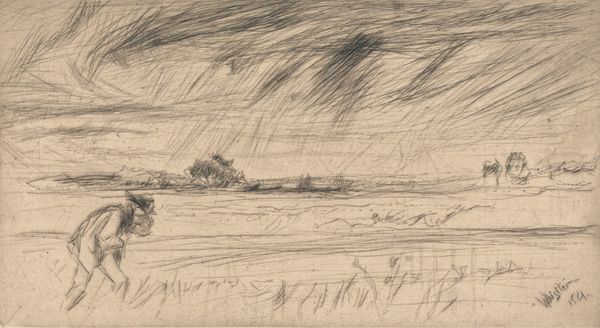
drawing, pencil
#
drawing
#
landscape
#
pencil
#
realism
Copyright: Rijks Museum: Open Domain
Editor: Here we have "Duinlandschap," a landscape drawing by Johan Antonie de Jonge, likely created sometime between 1881 and 1927. It’s rendered simply with pencil, giving it a very unassuming feel, almost like a fleeting impression captured on paper. What do you see in this piece, focusing on its formal aspects? Curator: The piece certainly arrests the eye due to its strategic use of line and tonal variation. Notice how de Jonge crafts depth, primarily through line density and subtle shading. The foreground presents more dense, gestural strokes suggesting textural complexity. Then, as the eye traverses the 'duinlandschap', the line work progressively lightens, almost dissolving into the paper. This not only establishes depth but also evokes a tangible atmosphere. The sky, for instance, is articulated with very faint, horizontal lines, setting the tone for the entire composition. How does this technique contribute to the mood? Editor: I see what you mean; it makes the horizon feel distant. The simplification directs more attention to the foreground details. Would you consider the contrast a focal element? Curator: Indeed. The interplay of texture created by hatching in the fore with almost untouched regions establishes a potent visual hierarchy. This contrast underscores the interplay between nearness and distance, effectively playing with spatial relationships on a flat plane. It compels us to delve into the materiality and arrangement of elements, transcending representational readings. Do you perceive any recurring motifs or rhythms within these arrangements? Editor: I can see that the vertical strokes in the foreground repeat in a diffused form along the horizon, unifying the artwork, so to speak. It really is an intentional and successful work when you break down its formal elements. Curator: Precisely. By reducing the landscape to fundamental artistic elements, de Jonge provokes a reflective encounter. It moves us beyond mere representation and focuses our gaze on the intrinsic values of composition, line, and texture. Editor: I now see a level of sophistication that wasn’t immediately obvious, focusing on these aspects enhances the appreciation significantly. Thank you for opening my eyes to a different mode of interpretation.
Comments
No comments
Be the first to comment and join the conversation on the ultimate creative platform.

